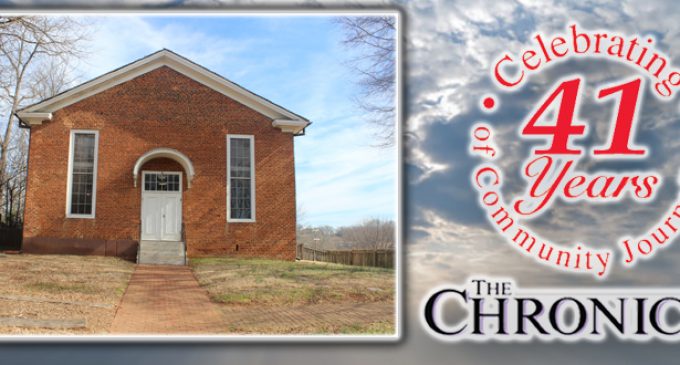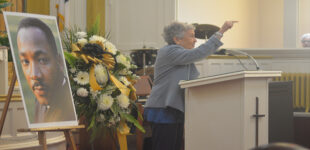Neighborhood keeps St. Philips Moravian going

Photos by Timothy Ramsey
Above is the historic old church of St. Philips Moravian Church. The church moved to its current location at 3002 Bon Air Ave. N.E. in 1967, but still worships at the Old Salem location at 913 S. Church St. on fifth Sundays of a given month and special occasions.
Editor’s note: This article takes a look at St. Philips Moravian Church during Black History Month.
By Timothy Ramsey
For The Chronicle
Mega-churches popping up left and right have influenced smaller community churches all across the country.
With the Baby Boomer generation getting older, and millennials flocking to mega churches in great numbers, where does that leave the community church that generation after generation of families have worshiped and how do they survive?
According to the Rev. Russ May of historic St. Philips Moravian Church, the smaller churches have a distinct advantage versus the mega-churches because they have an easier connection with their parishioners and with the individuals in the surrounding neighborhood. He also stated that the larger churches sometimes have a harder time connecting with all the members of the congregation because of the large number of people who attend the church.
“We are making a conscious decision despite the fact we are small and it would be cost effective to move to our old building, the fact is we would be uprooted from our neighborhood and we are not a neighbor unto ourselves; we are integrated in the neighborhood,” said May when speaking about the status of St. Philips.
St. Philips Moravian Church, which was organized in 1822 by a mostly slave population in Old Salem, and is one of the oldest black congregations in the United States. It currently stands as the only historic African-American Moravian congregation in the country. The church moved to its current location in 1967, but still worships at the Old Salem location on fifth Sundays of a given month and special occasions.
May went on to say it’s more about what the church can share, not what financial resources a church can spend.
St. Philips provides a meal for the neighborhood several times a year and May states that it’s important for the church to do so to stay connected with the neighborhood, not for any growth agenda, but just for individuals to come and share a meal which he says is the mindset of a small church.
“It is important for us to see ourselves as a teaching congregation within us and to our own families, as well as outwardly to the community. We try to be a witness to the things that we have seen that includes this space and the things we say and do at our other space. We are trying to share the story downward so the next generation is ready to carry the mantle forward,” said May of the goal of St. Philips.
Rev. May stated the small church will remain a mainstay in the community and St. Philips will continue to survive due to the historic aspect of the church, as well as the teachings the church provides. He is not concerned with the popularity of the mega-church because St. Philips will always try and build a faith-based community and people and to them, that is success.
















